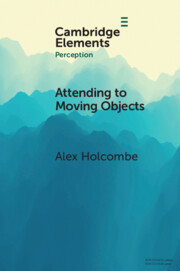Attending to Moving Objects
Our minds are severely limited in how much information they can extensively process, in spite of being massively parallel at the visual end. When people attempt to track moving objects, only a limited number can be tracked, which varies with display parameters. Associated experiments indicate that spatial selection and updating has higher capacity than selection and updating of features such as color and shape, and is mediated by processes specific to each cerebral hemisphere, such that each hemifield has its own spatial tracking limit. These spatial selection processes act as a bottleneck that gate subsequent processing. To improve our understanding of this bottleneck, future work should strive to avoid contamination of tracking tasks by high-level cognition. While we are far from fully understanding how attention keeps up with multiple moving objects, what we already know illuminates the architecture of visual processing and offers promising directions for new discoveries.
Product details
February 2023Paperback
9781009009973
75 pages
230 × 154 × 5 mm
0.15kg
Available
Table of Contents
- 1. Objects that move
- 2. Bottlenecks, resources, and capacity
- 3. The biggest myth of object tracking
- 4. Which aspect(s) of tracking determine performance?
- 5. Spatial interference
- 6. Unitary cognition (System B)
- 7. Objects and attentional spread
- 8. Grouping
- 9. Two brains or one?
- 10. Knowing where but not what
- 11. Abilities and individual differences
- 12. Towards the real world
- 13. Progress and recommendations
- Bibliography.


